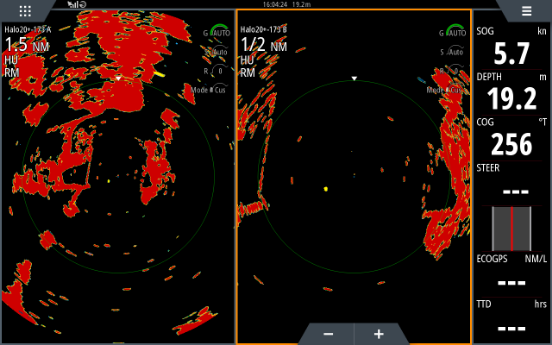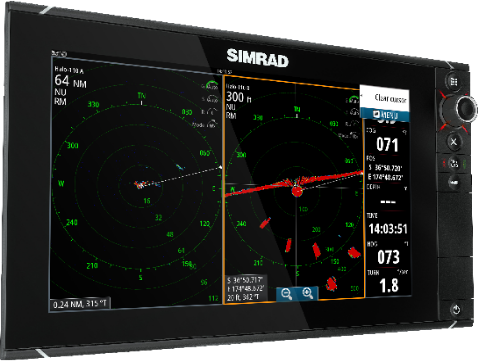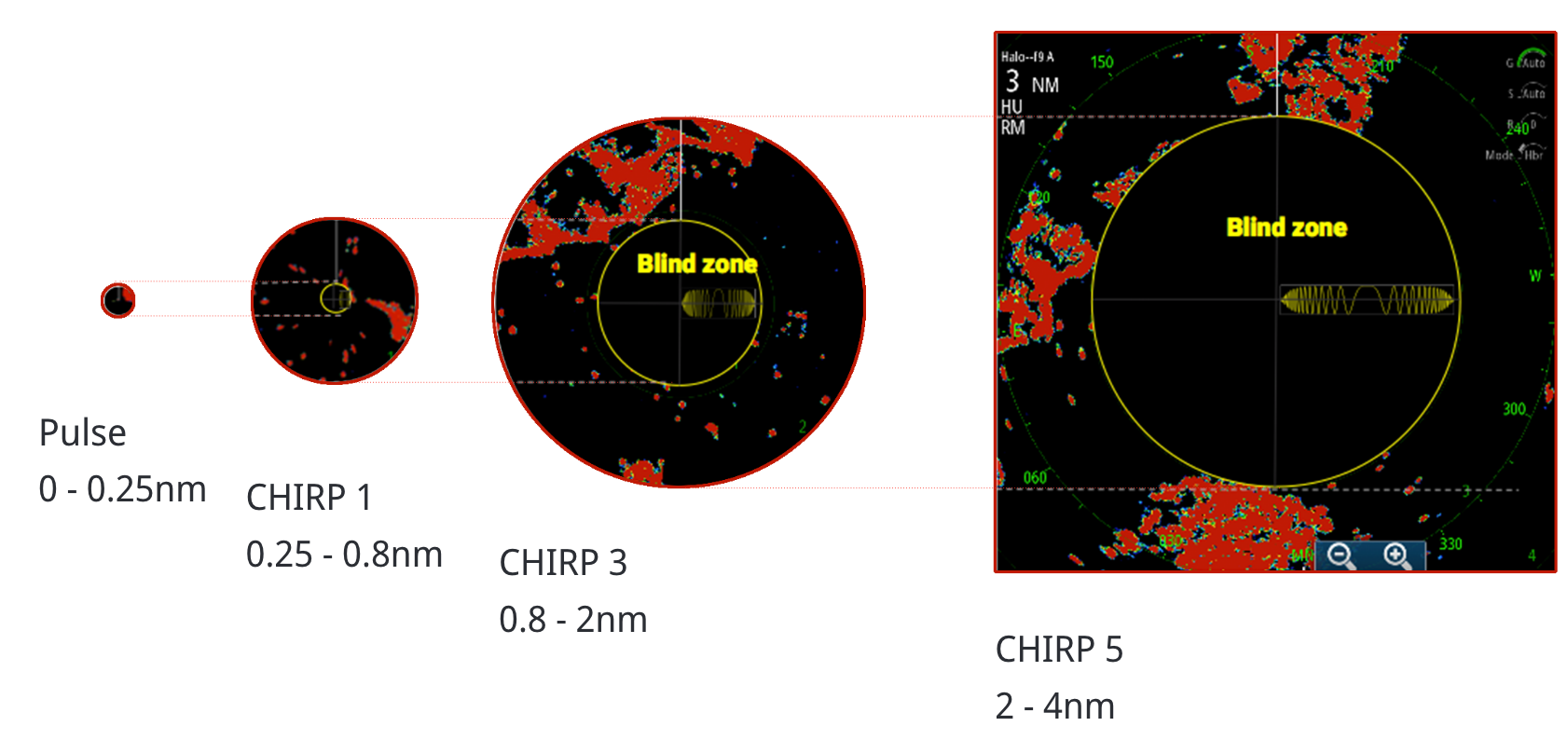“Our Dual Range system works in a similar fashion as it sends out a range of frequencies in a single CHIRP but then focuses on the range that you’ve selected for each individual window on your display. As a result, our radars don’t have the interleaving problem of ignoring the short range while they try to process long range.
“This means that there is no degradation of the short range performance while thinking about long range which maintains the high resolution for both ranges.”
Navico product expert Craig McMillan reinforces this and emphasises the key advantages of the Simrad® system.
“The bottom line is that our dual range doesn’t slow down the painting of the image,” he says. “As a result we have faster updates, which results in better situational awareness. This contrasts sharply with our competitors who drop the refresh rate to half as their systems paint one range before then painting the other. The Simrad® Dual Range system paints both at the same time, so there is no compromise”
When it comes to using this function, it is a simple matter of dragging and dropping what you want from the menu page onto the display screen and then selecting the ranges that you’re interested in. It is as simple as that. And as Laurie Bates goes on to explain, ease of use and the philosophy behind the scenes is another area that differentiates Simrad® from the competition.
“When we design our units and create features such as Dual Range, our philosophy is that we don’t want to artificially lock down the rest of the controls on the radar,” continues Laurie. “Instead, we want to ensure that users still have access to tuning the radar or changing other parameters, even though they’ve selected a particular feature or mode.
“For example, our VelocityTrack™ feature allows the user to select whether they want to highlight all moving targets or only those ones that are approaching. Alternatively they can turn the feature off. Another example would be the ability to set the speed threshold at which moving targets start to colour up.
“And while this might sound obvious, this is not commonplace in the radar world.”
So, from the most useful function that is most commonly overlooked, to the detail behind the scenes that is invisible to all but the designers and techies, understanding what’s under the skin of a Simrad® radar goes a long way to understanding how to get the best of your system.






















